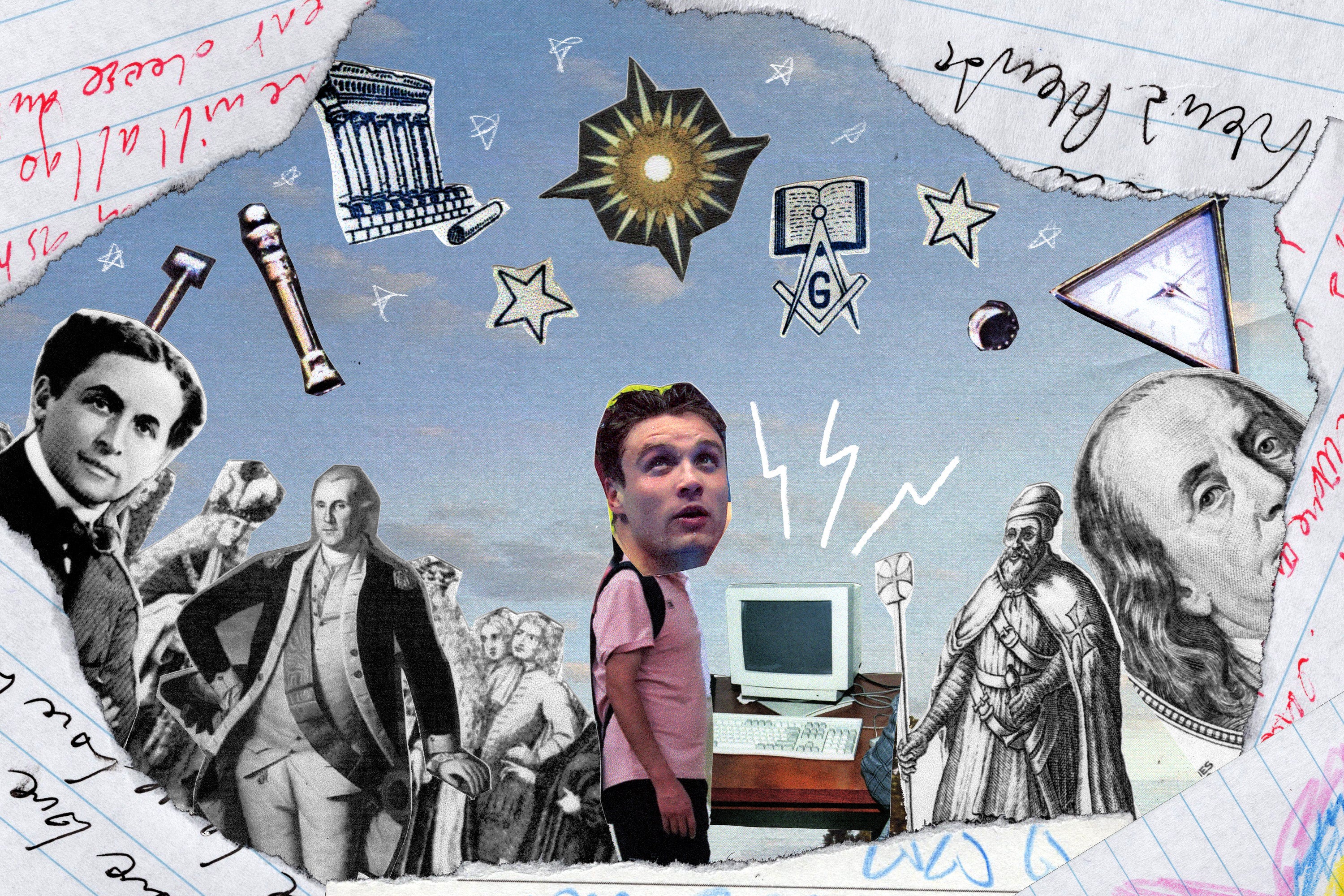The Ultimate Guide to Understanding How to Become a Freemason Step-by-Step
The Ultimate Guide to Understanding How to Become a Freemason Step-by-Step
Blog Article
Checking Out the Mysteries of the Freemason: What You Need to Know
The Freemason, a term usually shrouded in intrigue and controversy, represents a complicated tapestry of historical truth and modern-day misconception. Developed in the late 18th century, this secret culture was at first rooted in the Knowledge's suitables yet has since become synonymous with conspiracy theory concepts concerning elite control. As we browse the beginnings, essential figures, and the plain contrast between myth and truth, one need to think about exactly how these narratives influence modern assumptions of power and secrecy. What could be disclosed via a better evaluation of these elements can challenge long-held presumptions concerning the shadows that linger in our culture.
Origins of the Freemason
The origins of the Freemason are soaked in a blend of historical intrigue and ideological eagerness. Established in 1776 in Ingolstadt, Bavaria, by Adam Weishaupt, the team was initially created as a secret society intended at advertising Enlightenment suitables such as factor, secularism, and the separation of church and state. Weishaupt, a professor of canon regulation, sought to test the dominating authority of the church and state, which he deemed oppressive organizations suppressing intellectual and personal flexibility.
The Freemason looked for to hire influential members from various societal markets, consisting of politics, academia, and the arts, to promote a network committed to these Enlightenment principles. The culture run under a shroud of secrecy, employing coded language and rituals to shield its members from oppression, specifically offered the repressive environment of the time. However, the Freemason dealt with considerable opposition from both governmental authorities and spiritual establishments, which watched the group as a risk to their power.
Trick Numbers and Members
Who were the critical figures that shaped the Freemason's early influence and direction? The Bavarian Freemason, established in 1776 by Adam Weishaupt, emerged as an action to the overbearing societal structures of the time. how to become a freemason. Weishaupt, a regulation teacher, pictured the company as a way to advertise Knowledge suitables such as reason, secularism, and equal rights. His first employment efforts included influential intellectuals, such as Baron von Knigge, that played an important function in broadening the group's membership and business structure.
Another considerable number was Johann Gottlieb Fichte, a prominent philosopher whose ideas on nationalism and education and learning reverberated with the Freemason's objectives. Although Fichte was not an official member, his thoughtful supports influenced the group's belief. In addition, figures like the author and theorist Johann Wolfgang von Goethe were connected with the more comprehensive intellectual motions of the time, although their straight participation with the Freemason stays debated.
These vital figures added to the Freemason's early instructions, pushing the boundaries of political and social thought, while their cumulative efforts intended to challenge well-known norms and promote a climate of helpful resources modern change in Europe.
Misconceptions vs. Reality
Numerous misunderstandings surround the Freemason, commonly mixing reality with fiction in a way that covers its true nature. The concept that the Freemason proceeds to exert significant impact over globe occasions is a myth - how to become a freemason.
Another common myth is that the Freemason makes up a network of elite individuals manipulating global affairs. In fact, many conspiracy theory theories exaggerate the team's value, attributing unfounded intentions to societal trends and events. This has actually led to an oversimplified sight of complex problems.

Modern Interpretations
Contemporary interpretations of the Freemason commonly mirror broader societal anxieties and a fascination with secrecy and power. This modern lens often connects the Freemason with conspiracy theory concepts that suggest a concealed elite manages globe events, controling governments and economic climates for their own gain. Such narratives take advantage of a deep-seated suspect of authority, particularly in times of crisis or social upheaval.

Moreover, some modern analyses mount the Freemason as an allegory for the complexities of globalization and the interconnectedness of influential individuals and companies. This perspective urges a critical exam of just how power characteristics operate in today's world, highlighting the equilibrium in between openness and secrecy in governance and company methods.
Cultural Impact and Heritage
Influenced by centuries of intrigue, the social effect and tradition of the Freemason dig this prolong far beyond its historic beginnings. This secret culture, established in the late 18th century, has penetrated numerous aspects of pop culture, from literary works and film to songs and art. The idea of the Freemason has evolved right into a symbol Click Here of conspiracy theory concepts, commonly representing a regarded concealed power controling international events.
In literature, authors like Dan Brown have actually woven the Freemason right into elaborate stories, fascinating readers with styles of secrecy and power. Films such as "National Prize" and "The Da Vinci Code" even more perpetuate the appeal of the society, blending reality with fiction to produce interesting narratives.
The Freemason's impact likewise expands into songs, with artists referencing the company to stimulate motifs of disobedience and societal review. This portrayal has actually added to a fascination with the concept of clandestine teams regulating the levers of power, showing social stress and anxieties concerning authority and transparency.
Eventually, the Freemason's heritage is a complicated tapestry of misconception and truth, forming perceptions of privacy and control in modern discourse. Its enduring visibility in culture highlights mankind's perennial quest for recognizing surprise truths.
Verdict
The exploration of the Freemason reveals an intricate interplay between historic realities and modern-day myth-making. Founded in the Knowledge period, this society aimed to challenge oppressive frameworks, yet its heritage has been overshadowed by conspiracy concepts that recommend elite adjustment. Understanding the distinctions between the original suitables and contemporary analyses is crucial for understanding the enduring fascination with the Freemason and its significant influence on social stories surrounding power and secrecy in society.
Report this page